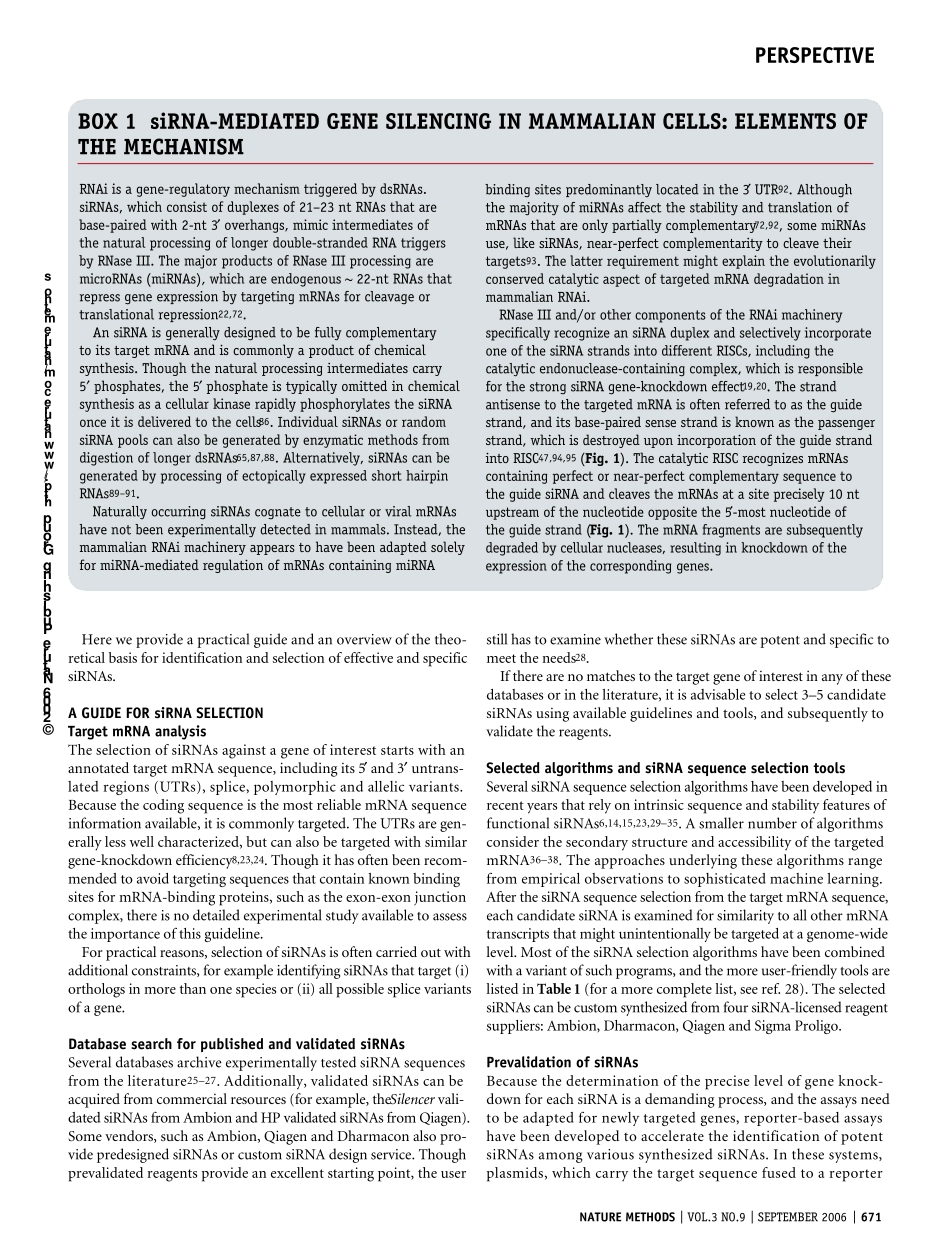On the art of identifying effective and specific siRNAsYi Pei & Thomas Tu schlSmall interfering RNAs (siRNAs) have been widely exploited for sequence-specific gene knockdown, predominantly to investigate gene function in cultured vertebrate cells, and also hold promise as therapeutic agents. Because not all siRNAs that are cognate to a given target mRNA are equally effective, computational tools have been developed based on experimental data to increase the likelihood of selecting effective siRNAs. Furthermore, because target-complementary siRNAs can also target other mRNAs containing sequence segments that are partially complementary to the siRNA, most computational tools include ways to reduce potential off-target effects in the siRNA selection process. Though these methods facilitate selection of functional siRNAs, they do not yet alleviate the need for experimental validation. This perspective provides a practical guide based on current wisdom for selecting siRNAs.The evolutionarily conserved processes whereby small double-stranded (ds)RNAs of distinct size and structure sequence-specifically suppress the expression of their target genes are referred to as RNA silencing or RNA interference (RNAi)1. Among the repertoire of known small RNAs, siRNAs mediate gene-specific silencing pri-marily via recognizing and inducing degradation of the mRNAs of targeted genes. Consequently, siRNAs have become one of the most valuable reagents to function-ally annotate genomes and possess great potential as therapeutics2–4.Shortly after the discovery that siRNA duplexes can specifically silence mammalian genes, it was thought that almost any target-complementary siRNA effectively and specifically silences its cognate target gene5. In practic...


